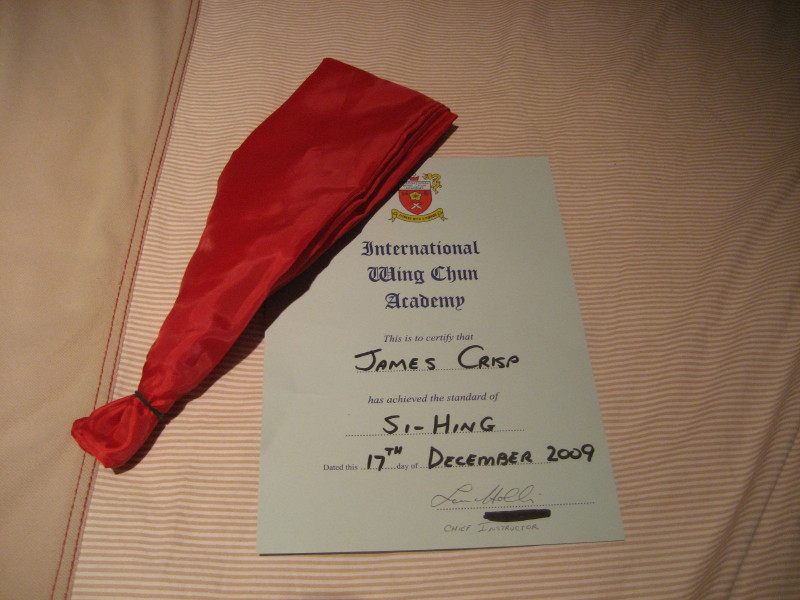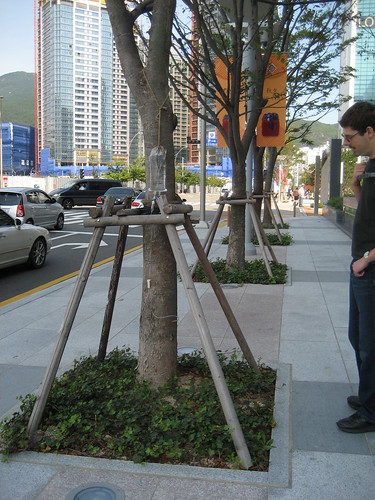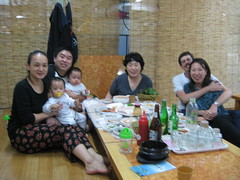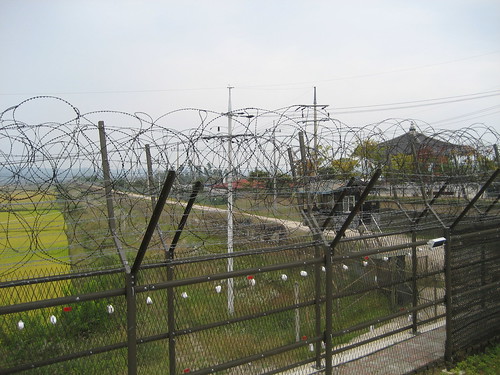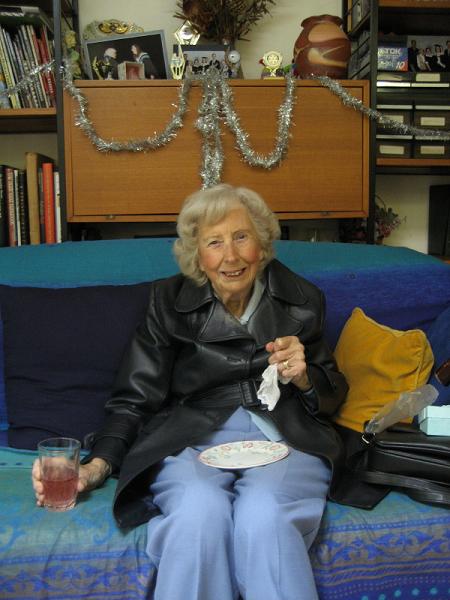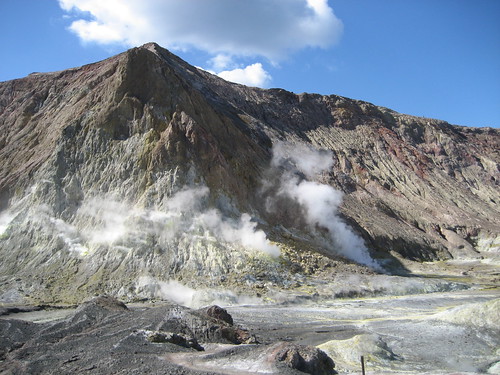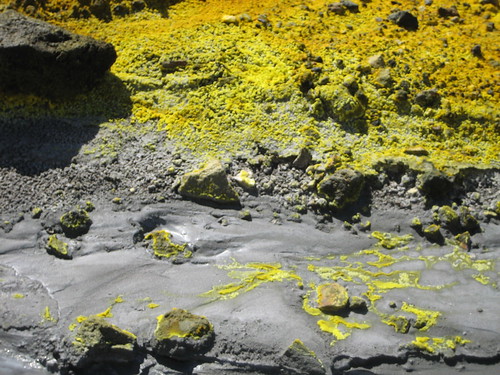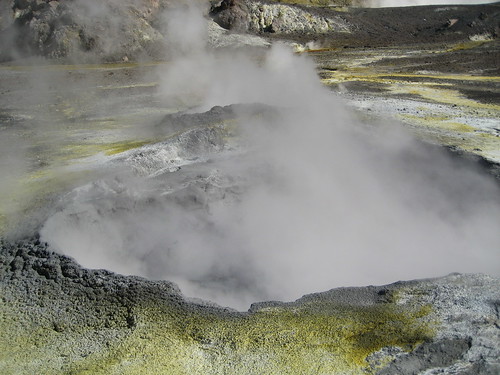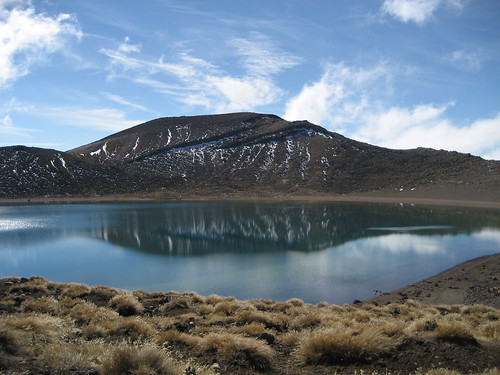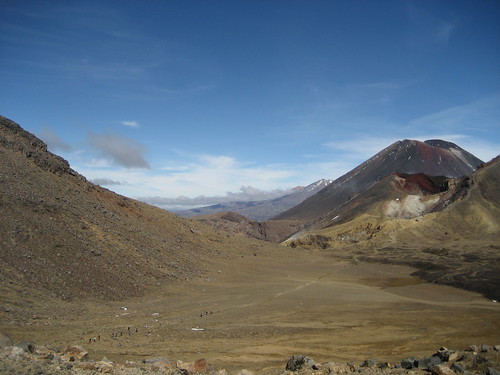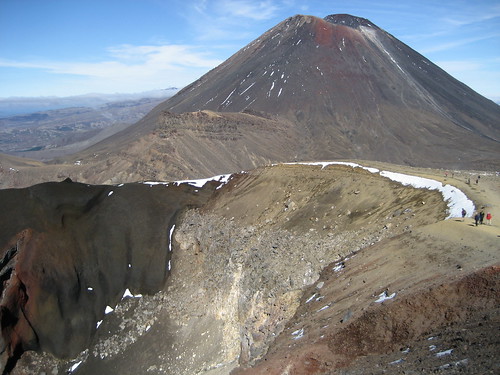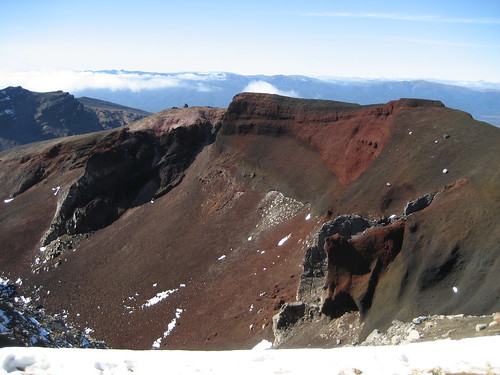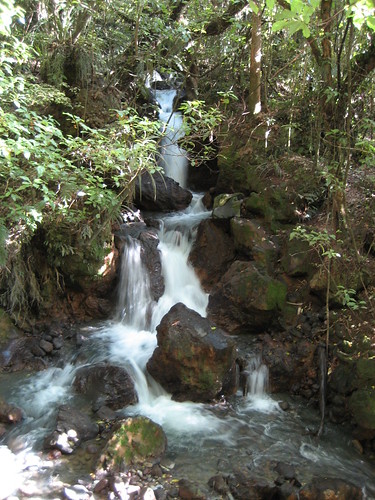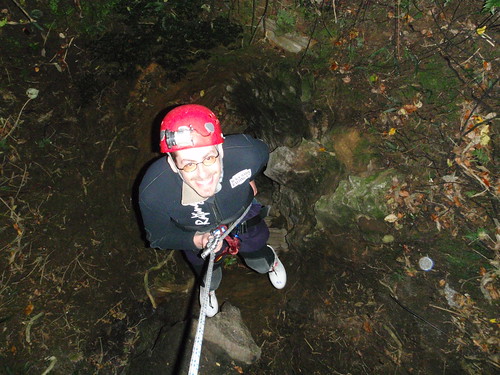Last Thursday, I finally took my Si-Hing (Junior Instructor) grading, and passed!
Category: Personal Page 2 of 6
Soosun and I are just back from a few weeks in South Korea. We had a good time, with many friends and relatives to catch up with, but also some time to travel around.
At the start of the trip, I went to the DMZ (the “demilitarised zone” at the border with North Korea). It’s not very far from Seoul, and is only open to “foreigners” (not Korean citizens). It was quite an interesting place, and not a little scary, with mine fields, tank traps, North Korea soldiers and stories of massacres (including one with an axe, over tree pruning) and previous gun battles over defectors. The high point of the DMZ tour was going to the tunnels dug by North Koreas for invasion and the JSA (joint security area) where I briefly stepped over into North Korean soil. The South Korean guards are all chosen for their size and height and stand in a modified Taekwondo stance. Most places we weren’t allowed to take pictures, but here is one of the negotiating table which is half in North and half in South Korea, some protective fencing and the North Korean size of the JSA, including a North Korean soldier.
I also went to see some Dinosaur footprints at Goeje. Quite a find, with an interesting museum as well.

We spent a few days at the end of the trip in Jeju Island, which is Korea’s most tropical area. There are a lot of beautiful spots, activities and theme parks spread around the island (which is big enough to need a car but small enough you don’t have to drive for too long). There is a tall mountain to climb in the middle (about 20km return, 2km up), and some pleasant beaches as well.

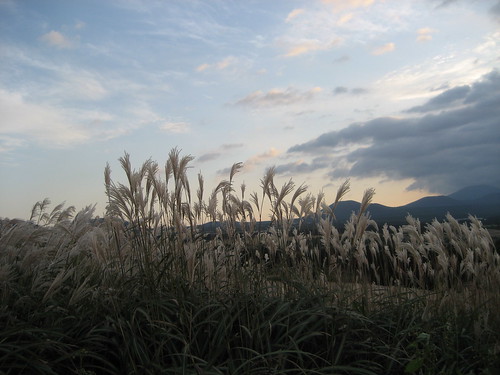

More Korea photos here.
A while back I bought a copy of Now, Discover your Strengths by Marcus Buckingham and Donald Clifton, and have only just got around to reading it. The book comes with a single-use code that lets you take an online personality test with 180 questions, with the aim of determining your 5 core strengths. The test takes about half an hour and is not onerous.
The book outlines one main idea. Find your natural talents and capitalize on these, building them up into strengths. Shape your work and life in ways that use your natural talents, as this will make you more effective, productive and happy. Although anyone can learn anything, people with a natural talent in an area are going to be able to reach a higher level of capability and success. Mitigate your weaknesses by partnering with people who have complementary strengths, developing a support system to help you, improving your skills in the area just enough to stop them from detracting from your strengths or simply stop doing things that play to your weaknesses.
The core concept of playing to your strengths is covered from many angles in the book and with supporting stories of successful people like Bill Gates and Warren Buffett. There is then a detailed description of each of the strengths that the online personality test can highlight. The last part of the book is interesting and focuses on building organisations which play to people’s strengths, management of people with different strengths and some thoughts on the staff review process in organisations.
Overall, the book was a very quick read with low information density. The online test was fun. You can see my results below. I don’t think it told me anything too new – I already know that I’m pretty analytical, like to learn, focus strongly on achieving tasks etc. The core idea about playing to and building your strengths does seem a good one from the personal satisfaction and cost/benefit point of view (assuming society values the areas you have talents in, and your areas of weakness don’t get in the way too often).
Please note that the following text is Copyright 2000 The Gallup Organization.
Analytical
Your Analytical theme challenges other people: “Prove it. Show me why what you are claiming is true.” In the face of this kind of questioning some will find that their brilliant theories wither and die. For you, this is precisely the point. You do not necessarily want to destroy other people’s ideas, but you do insist that their theories be sound. You see yourself as objective and dispassionate. You like data because they are value free. They have no agenda. Armed with these data, you search for patterns and connections. You want to understand how certain patterns affect one another. How do they combine? What is their outcome? Does this outcome fit with the theory being offered or the situation being confronted? These are your questions. You peel the layers back until, gradually, the root cause or causes are revealed. Others see you as logical and rigorous. Over time they will come to you in order to expose someone’s “wishful thinking” or “clumsy thinking” to your refining mind. It is hoped that your analysis is never delivered too harshly. Otherwise, others may avoid you when that “wishful thinking” is their own.
Learner
You love to learn. The subject matter that interests you most will be determined by your other themes and experiences, but whatever the subject, you will always be drawn to the process of learning. The process, more than the content or the result, is especially exciting for you. You are energized by the steady and deliberate journey from ignorance to competence. The thrill of the first few facts, the early efforts to recite or practice what you have learned, the growing confidence of a skill mastered—this is the process that entices you. Your excitement leads you to engage in adult learning experiences—yoga or piano lessons or graduate classes. It enables you to thrive in dynamic work environments where you are asked to take on short project assignments and are expected to learn a lot about the new subject matter in a short period of time and then move on to the next one. This Learner theme does not necessarily mean that you seek to become the subject matter expert, or that you are striving for the respect that accompanies a professional or academic credential. The outcome of the learning is less significant than the “getting there.”
Command
Command leads you to take charge. Unlike some people, you feel no discomfort with imposing your views on others. On the contrary, once your opinion is formed, you need to share it with others. Once your goal is set, you feel restless until you have aligned others with you. You are not frightened by confrontation; rather, you know that confrontation is the first step toward resolution. Whereas others may avoid facing up to life’s unpleasantness, you feel compelled to present the facts or the truth, no matter how unpleasant it may be. You need things to be clear between people and challenge them to be clear-eyed and honest. You push them to take risks. You may even intimidate them. And while some may resent this, labeling you opinionated, they often willingly hand you the reins. People are drawn toward those who take a stance and ask them to move in a certain direction. Therefore, people will be drawn to you. You have presence. You have Command.
Focus
“Where am I headed?” you ask yourself. You ask this question every day. Guided by this theme of Focus, you need a clear destination. Lacking one, your life and your work can quickly become frustrating. And so each year, each month, and even each week you set goals. These goals then serve as your compass, helping you determine priorities and make the necessary corrections to get back on course. Your Focus is powerful because it forces you to filter; you instinctively evaluate whether or not a particular action will help you move toward your goal. Those that don’t are ignored. In the end, then, your Focus forces you to be efficient. Naturally, the flip side of this is that it causes you to become impatient with delays, obstacles, and even tangents, no matter how intriguing they appear to be. This makes you an extremely valuable team member. When others start to wander down other avenues, you bring them back to the main road. Your Focus reminds everyone that if something is not helping you move toward your destination, then it is not important. And if it is not important, then it is not worth your time. You keep everyone on point.
Input
You are inquisitive. You collect things. You might collect information—words, facts, books, and quotations—or you might collect tangible objects such as butterflies, baseball cards, porcelain dolls, or sepia photographs. Whatever you collect, you collect it because it interests you. And yours is the kind of mind that finds so many things interesting. The world is exciting precisely because of its infinite variety and complexity. If you read a great deal, it is not necessarily to refine your theories but, rather, to add more information to your archives. If you like to travel, it is because each new location offers novel artifacts and facts. These can be acquired and then stored away. Why are they worth storing? At the time of storing it is often hard to say exactly when or why you might need them, but who knows when they might become useful? With all those possible uses in mind, you really don’t feel comfortable throwing anything away. So you keep acquiring and compiling and filing stuff away. It’s interesting. It keeps your mind fresh. And perhaps one day some of it will prove valuable.
Soosun and I had a lovely week in New Zealand, and great weather. We visited the North Island, landing in Auckland. We drove straight to Rotorua, arriving in time for dinner. The next day, we visited White Island, the most volcanic area in the Southern Hemisphere. Pretty amazing, had to wear gas masks. Steam, acid, sulphur and bubbling pools everywhere!
Then on to the Tongariro Crossing, probably the best bushwalk I have ever done – 19kms of amazing scenery, steep climbs, volcanic craters, lakes and the “Mount Doom” volcano from the Lord of the Rings. Although it took all day, it was not a walk that ever left you bored – so much variety, ending finally with rainforest.
We went adventure caving in Waitomo (the Black Abyss), which started with tight abseil down a chimney, swimming and sloshing through wet caves in a wetsuit and floating on tires, some tight squeezes and we finally got back to the surface climbing up another chimney. Great fun!
More New Zealand photos here.
 While in the Cook Islands, we went to the National Museum and it was there that I first heard about Tom Neale and saw reference to him on a census of island populations from the 1950s (“Suvarov: population 1” with a footnote saying “Tom Neale”!). He was the only inhabitant of Suvarov, an atoll in the Cook Islands, having done what many people only dream of. He left civilisation and moved to a beautiful, deserted island in the Pacific, replete with coconut trees, jungle, and an azure lagoon. Not only that, but he survived and prospered there and wrote an amazing autobiography of the time, called “An Island to Oneself”.
While in the Cook Islands, we went to the National Museum and it was there that I first heard about Tom Neale and saw reference to him on a census of island populations from the 1950s (“Suvarov: population 1” with a footnote saying “Tom Neale”!). He was the only inhabitant of Suvarov, an atoll in the Cook Islands, having done what many people only dream of. He left civilisation and moved to a beautiful, deserted island in the Pacific, replete with coconut trees, jungle, and an azure lagoon. Not only that, but he survived and prospered there and wrote an amazing autobiography of the time, called “An Island to Oneself”.
I tried to borrow “An Island to Oneself” from the National Library on Rarotonga (there is only one library on Rarotonga!) but unfortunately all copies were out. So, I turned to Amazon (the long tail poster child), and was very happy to find they could source me a copy. I don’t want to spoil the tale, but recommend you have a read if you have ever thought about what life would be like on a desert island, surviving only by your own wit and skills, hundreds of miles from civilisation!
UPDATE (6 Jul 2016): Thanks to Don Hirst for this link to the full book online.
Stance
- Lift up through body. Imagine your body is hanging from a thread from the middle of the top of your head
- Shoulders should be relaxed and down
- Knees springy (ie very slightly bent so you can bounce up and down)
- Tie gung on – tensing core muscles and rotating pelvis up slightly (bottom of pelvis goes forward)
- core muscles tensed, rest of body relaxed
Moving
- Get into stance
- Move with weight centred between legs, not on one foot or the other
- When you move forward, your core/waist should move forward in time with the leg. Ie, leg should NOT lead and then pull body forward.
- Waist should be driving the leg movement, which means your weight still stays balanced between your legs
- Legs should be light and relaxed, body is being drawn up by the stance
Speed
When punching or kicking, you arms and legs should be completely relaxed, although tie gung should be on. If completely relaxed can move faster. Imagine swatting a fly.
When moving in, trust your wing chun. Moving in should be almost like getting pushed from your waist from behind. Legs relaxed, high acceleration, full weight moving forward, taking the space they currently occupy.
Pivoting
Pivot so that both feet finish moving at the same time. Move from the waist.
Guard
Guard should be with arms relaxed and fingers pointing forward towards your opponent’s centre line where the neck meets the trunk, to give even time for high and low attacks.
Defending against head punches
Think primarily of hitting the opponent with your punch/strike, as this will cripple the attack. The dai sau is secondary. Dia sau should keep sheering upwards on contact. It should be a rotation in the shoulder joint, your angles should not collapse. Your shoulder should always be down and the ball of the joint rotating at the back of the joint. Dia sau should be inscribing an even circle of your space. Contact should be shearing with the hard side bones of your arm against the inside of their wrist. Wrist should always stay on centre. Your fingers may be pointing towards the opponent’s head near the end of the move, or your hand may be above your head, depending on strength and hookedness of the attack.
Hook Kick
You really need to swing your hip into a good hook kick. Your leg should go up quite high as it swings around and then drive down into your opponent’s thigh / leg. In close, you may contact with your knee, with more distance, you should be contacting with the front of your lower leg (above ankle, but below knee).
The Cook Islands are an awesome place to visit to chill out and relax. We stayed there for two weeks and had a great time, coming back much refreshed. We only visited Rarotonga, the largest island which has about 14,000 people, and a coast line of around 32km. Basically it is a volcanic island surrounded by a large, shallow reef with bath-water warm water and lots of little uninhabited motu (islands) to explore. Around the edge of the island are beaches and flat land where people live, usually in houses with large gardens, lots of coconut and mango trees, and vivid tropical plants. In the middle of the island are tall mountains covered in jungle. It is a great place for water-sports such as kayaking, fishing, swimming and snorkelling, and there’s also some fairly hard core walking tracks to explore in the jungle. Prices are reasonable, though food tends to be quite expensive as most of it comes in from New Zealand. The Cook Islanders maintain their culture very strongly and put on enjoyable performances and feasts that you can attend (often called “Island Nights”).

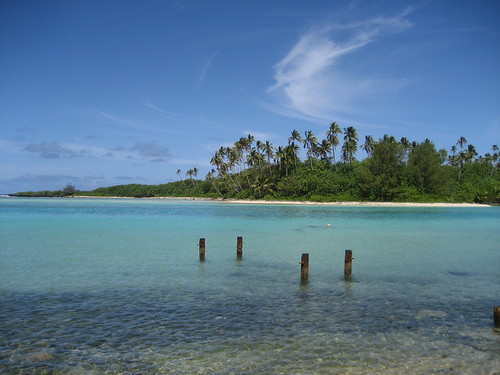
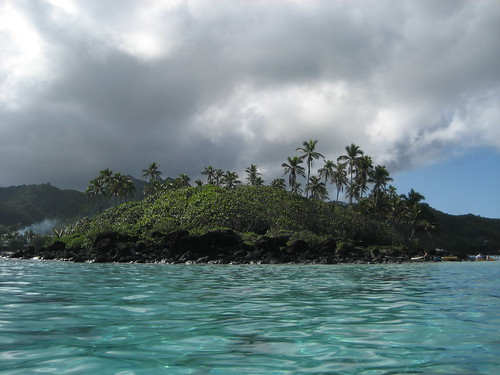
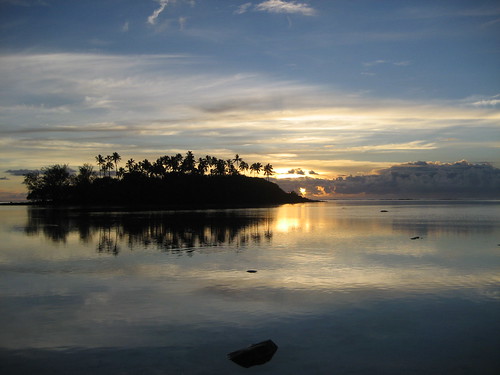
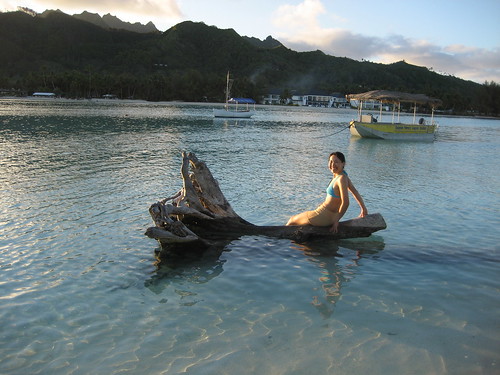
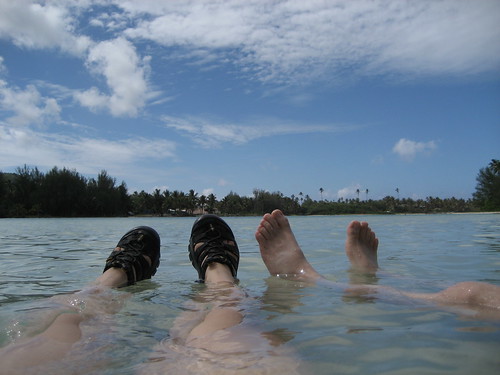

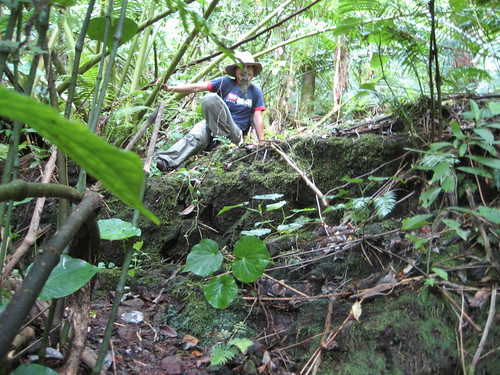
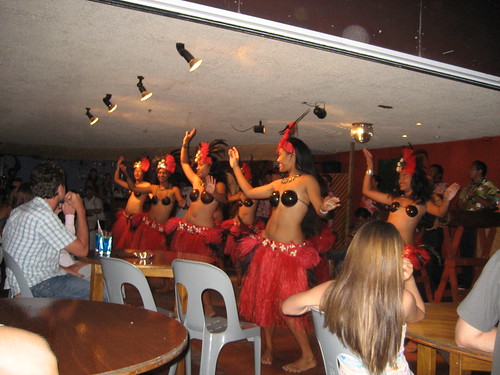
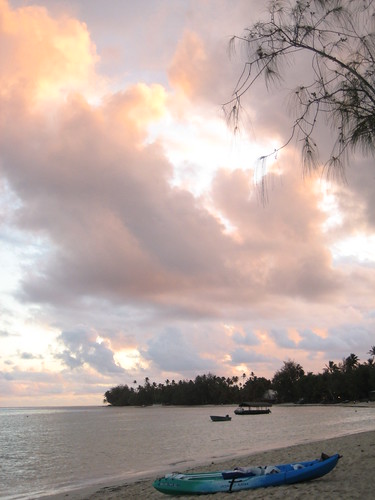
Optus, my ISP, is kind enough to give subscribers a free copy of F-Secure’s security suite which offers anti-virus, anti-spam and firewall. I read some half decent reviews of the product so I thought I’d install it and give it a go. Unfortunately, it was fraught with problems. First of all, after installing I got a blue screen on reboots. After uninstalling AVG (my previous anti-virus) in safe mode, my computer could boot. Next, I tried to do a full system scan, but the F-Secure automatic update kicked in at the same time and it crashed the scanner. So, I rebooted, and tried a full system scan. I tried twice, but each time, it hung on a random .class (compiled Java) from GlassFish. Not great. So I went to the F-Secure website to submit a bug report. I filled in the form, and couldn’t submit it because one of the drop down lists which was mandatory was disabled in Opera. I then thought I’d try the site in IE7, but IE7 just hung, presumably thanks to F-Secure’s firewall.
Overall, I would strongly suggest that you do not bother to try the F-Secure product suite, even if it is offered to you for free.

